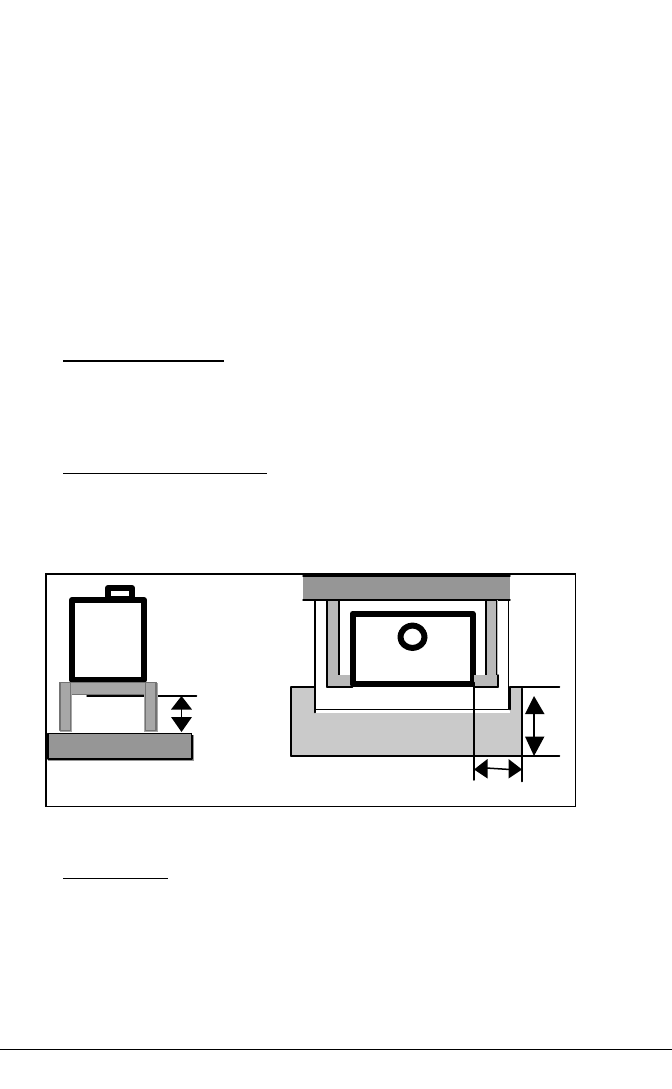
2020/2220/2520/2210/2510/2200/2500 7 03.27883.100
Convection air may be led to arrive from both the room and outside (other room,
cellar, exterior) to the bottom side of the fireplace. In case convection air is supplied
(directly or indirectly) from outside, it may also be useful as a supply of fresh air for
combustion.
At any rate, assure proper home air management and sufficient air supply into the
room.
Ensure not to use other air-consuming appliances, such as heaters, cooking hoods,
bathroom ventilators, in the same room or in the house while the stove is burning;
or make sure to have an extra ventilation grille installed for these appliances.
4.1.3. Floor, walls
The appliance shall be installed on floors with an adequate load-bearing capacity.
Combustible material must be sufficiently protected. The floor under the fireplace
and the walls around it must not contain electric wires.
Under the appliance
Under the appliance, any combustible material must be removed or specially
shielded by means of a 6 cm concrete slab and 10 cm insulation. The legs of the
appliance may rest directly on the concrete slab and insulation must be applied in-
between the legs.
Floor round the appliance
A floor made of combustible material must be properly shielded in the following
areas:
Front: height of the lower part of the fire chamber + 30 cm, but 60 cm at least.
Sides: height of the lower part of the fire chamber + 20 cm, but 40 cm at least.
Walls, ceiling
Combustible walls behind, next to, or above the fireplace must be shielded with at
least a 10 cm stone or brick wall and 10 cm insulation. Fireproof materials should be
covered with at least 6 cm insulation.
H
V
S
V > H + 30 >
60
V > H +30 > 60
S > H + 20 > 40
Maten in cm


















